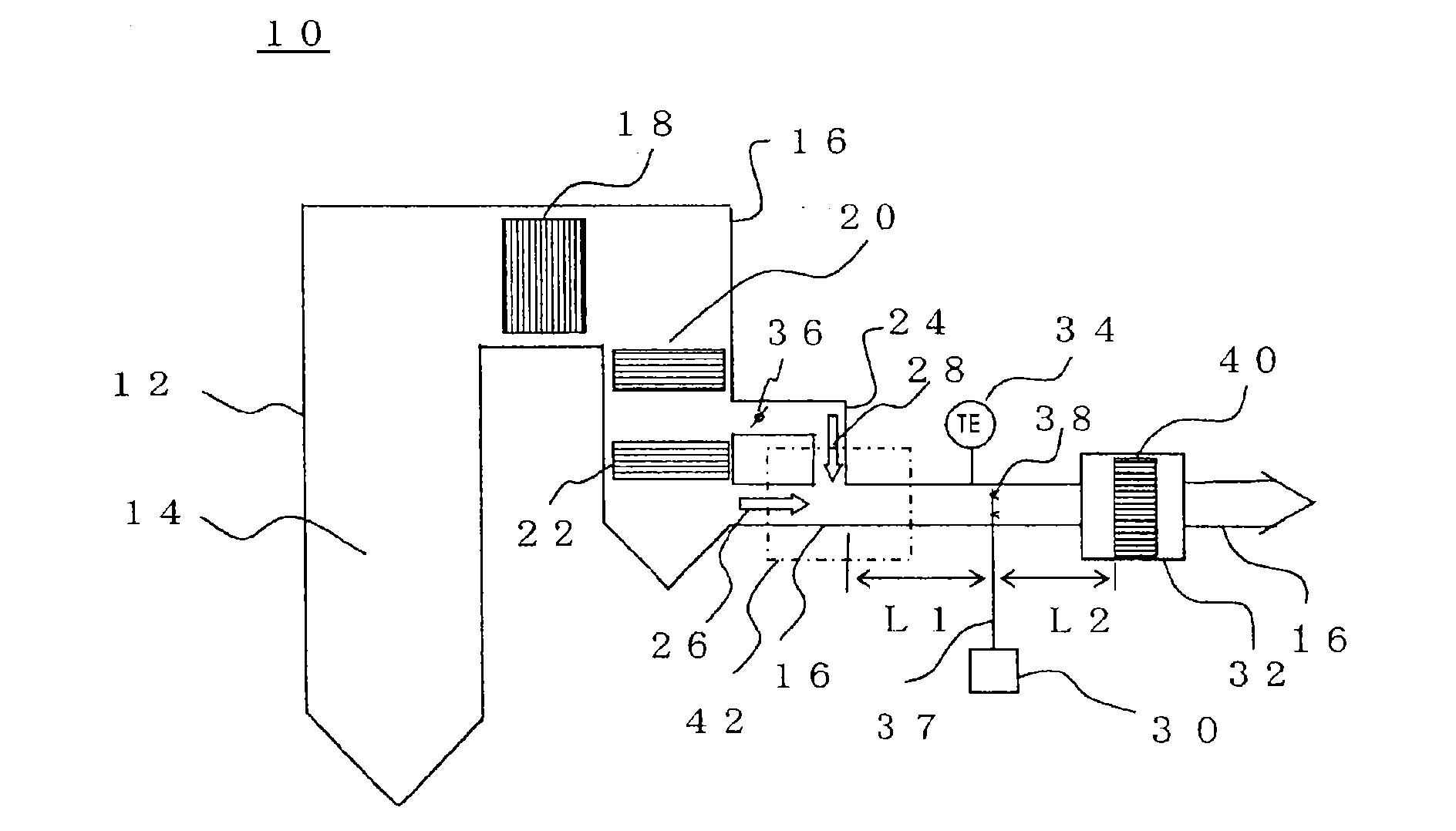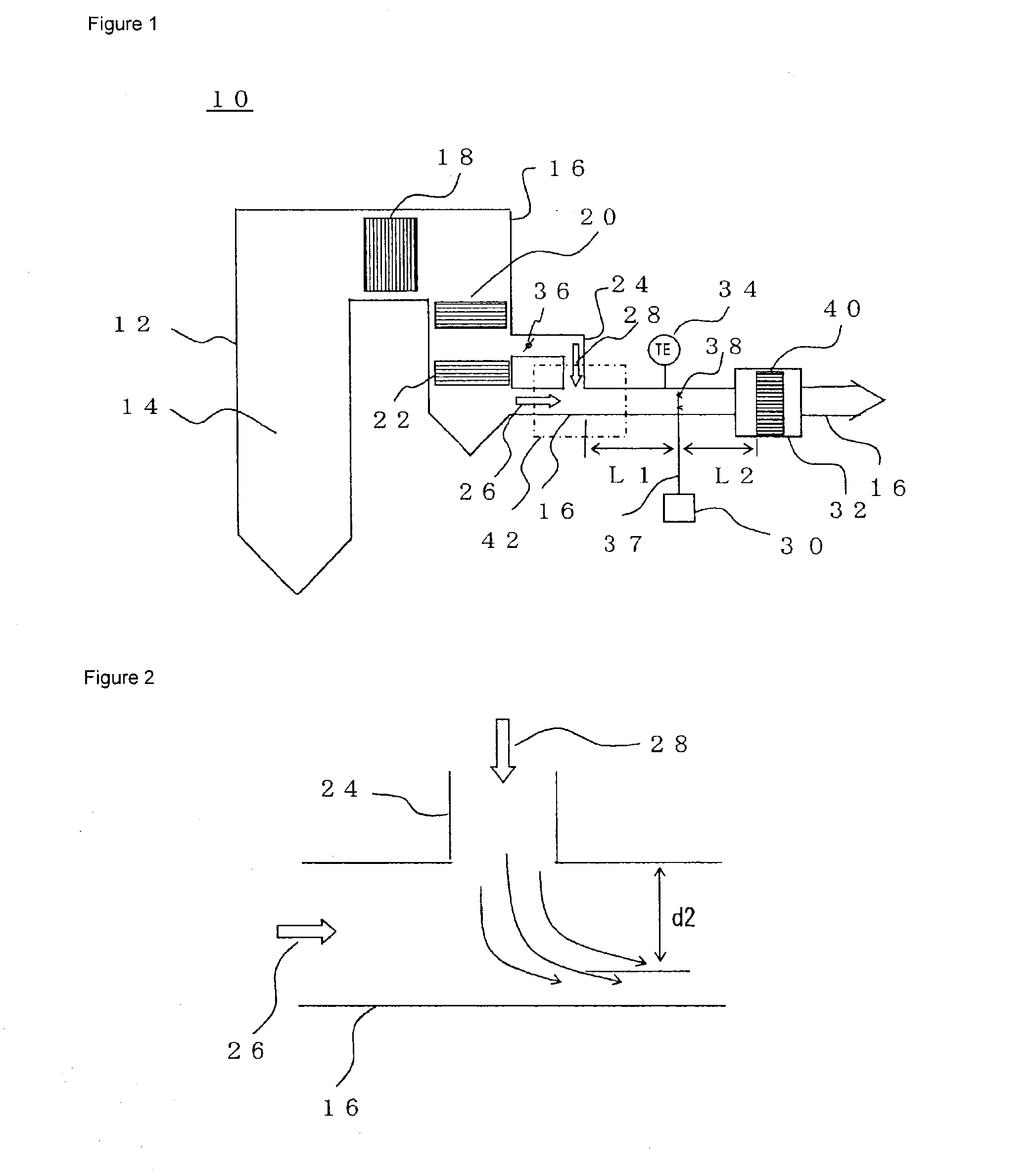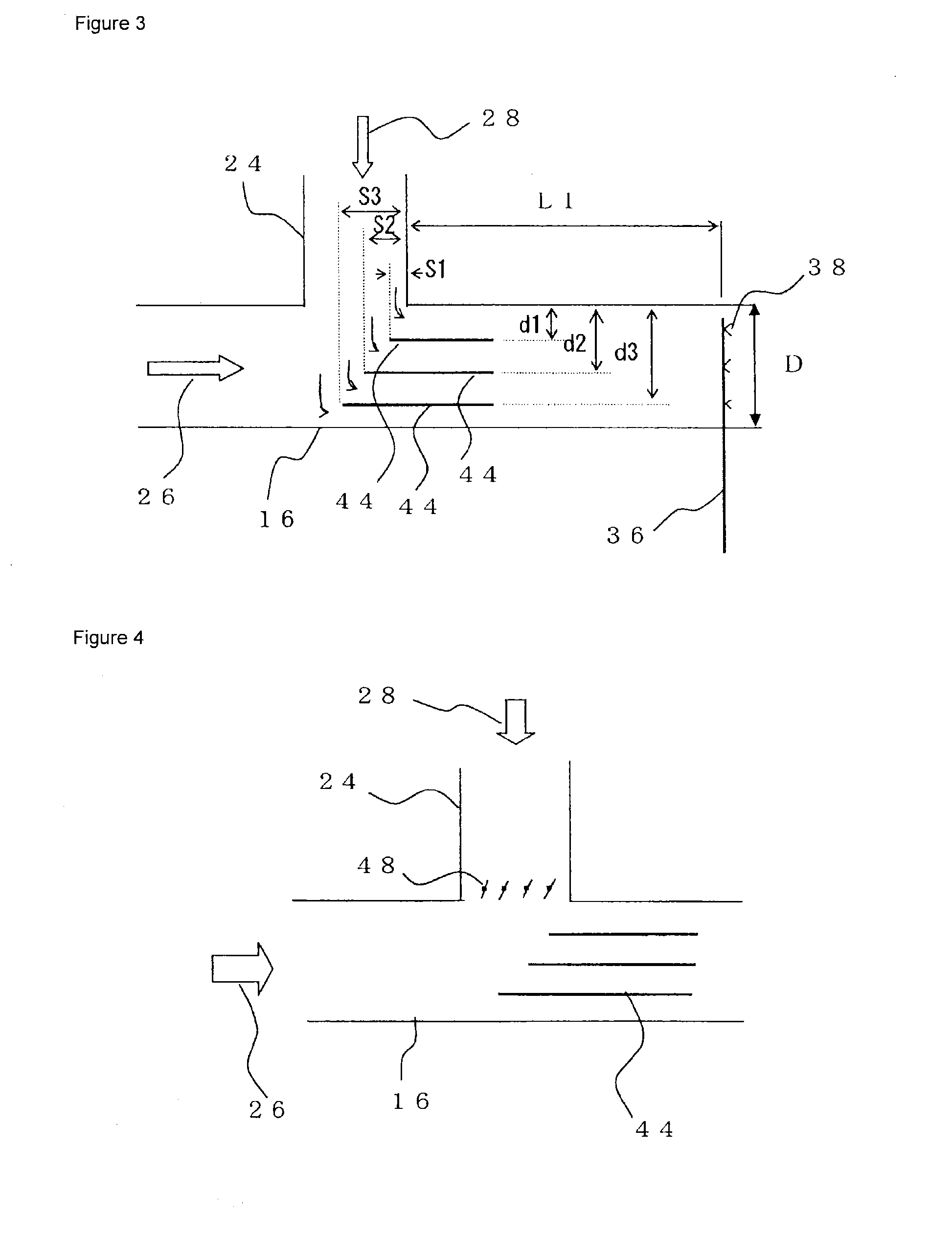Exhaust gas denitrizer
a technology of exhaust gas and denitrizer, which is applied in the direction of emission prevention, separation process, lighting and heating apparatus, etc., can solve the problems of catalyst performance degradation, and achieve the effect of reducing duct pressure loss and reducing the temperature of rejoined exhaust gas
- Summary
- Abstract
- Description
- Claims
- Application Information
AI Technical Summary
Benefits of technology
Problems solved by technology
Method used
Image
Examples
first example
[0049]FIG. 3 is an enlarged view of the meeting place 42 between the main duct 16 and bypass duct 24 shown in FIG. 1 and is a diagram showing a first example of the characteristic portion of the exhaust gas denitrizer. As shown in FIG. 3, at the meeting place between the main exhaust gas 26 and bypass exhaust gas 28 in the main duct 16, three partition plates 44 are installed with plate surfaces turned to the inflow direction of the bypass exhaust gas 28, partitioning a main exhaust gas channel into a plurality of sub-channels along the flowing direction of the main exhaust gas 26. Also, upstream-side ends of the partition plates 44 along the inflow direction of the main exhaust gas face the incoming bypass exhaust gas by being shifted from one another toward the upstream side of the main exhaust gas starting from the inflow side of the bypass exhaust gas.
[0050]The partition plates 44 installed in this way cause the bypass exhaust gas 28 flowing into the main duct 16 to come into co...
second example
[0057]FIG. 4 is an enlarged view of the meeting place 42 between the main duct 16 and bypass duct 24 shown in FIG. 1 and is a diagram showing a second example of the characteristic portion of the exhaust gas denitrizer. In the present example, in addition to installing the partition plates 44 as in the case of the first example, adjustment vanes are installed in the bypass duct 24. Only differences from the first example will be described, and description of the other parts will be omitted.
[0058]As shown in FIG. 4, turnable adjustment vanes 48 are installed at the meeting place 42 of the bypass duct 24 with the main duct 16 to adjust flow direction of the bypass exhaust gas 28 flowing into the main duct 16.
[0059]When the bypass damper 36 is installed in the bypass duct 24 as described above and the flow rate of the bypass exhaust gas 28 is adjusted by changing a tilt angle based on detected values of the temperature sensor 34, the flow ratio between the main exhaust gas 26 and bypas...
third example
[0065]FIG. 5 is an enlarged view of the meeting place 42 between the main duct 16 and bypass duct 24 shown in FIG. 1 and is a diagram showing a third example of the characteristic portion of the exhaust gas denitrizer. The present example is a variation of the first example and uses different forms of the main duct 16 and partition plates 44. Therefore, only differences from the first example will be described, and description of the other parts will be omitted.
[0066]As shown in FIG. 5, according to the present example, the main duct 16 is shaped to gradually increase in diameter as it goes downstream from near the meeting place of the two types of exhaust gas. In this case, being installed with the plate surfaces turned to the inflow direction of the bypass exhaust gas 28, the partition plates 44 extend straight along the flowing direction of the main exhaust gas 26 near the meeting place, then extend along the flowing direction by spreading with increases in the diameter of the ma...
PUM
| Property | Measurement | Unit |
|---|---|---|
| exhaust gas temperature | aaaaa | aaaaa |
| exhaust gas temperature | aaaaa | aaaaa |
| concentrations | aaaaa | aaaaa |
Abstract
Description
Claims
Application Information
 Login to View More
Login to View More - R&D
- Intellectual Property
- Life Sciences
- Materials
- Tech Scout
- Unparalleled Data Quality
- Higher Quality Content
- 60% Fewer Hallucinations
Browse by: Latest US Patents, China's latest patents, Technical Efficacy Thesaurus, Application Domain, Technology Topic, Popular Technical Reports.
© 2025 PatSnap. All rights reserved.Legal|Privacy policy|Modern Slavery Act Transparency Statement|Sitemap|About US| Contact US: help@patsnap.com



